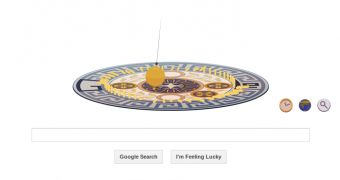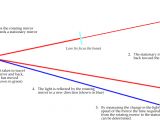Google is celebrating the 194th birthday of French scientist Léon Foucault, who made several contributions to the study of light but is perhaps best known for his experiment to prove the rotation of the Earth. It's that experiment that Google is depicting in its doodle today.
In fact, Google is actually recreating the experiment, sped up, with a pendulum swinging back and forth while the plane below it rotates, simulating the rotation of the Earth.
Foucault did the exact same thing with a 28-kilogram (62-pound) pendulum suspended from the dome of the Paris Panthéon, 67 meters (220 feet) above. The pendulum was given a swinging motion and would sway side to side gently.
If the Earth didn’t move, the motion would remain in the same plane, a straight line. But because of the rotation of the Earth, while the pendulum technically stayed in place, the floor beneath it rotated slightly, making a complete rotation in a day.
Google has recreated the experiment faithfully; it takes a full day to run its course. What's more, it also takes your local time and location into account.
But if you can't wait that long, you can speed things up by setting the clock to whatever you want it to be. What's more, you can also pick the relative location of the experiment, i.e. you can change the simulated latitude, resulting in a different motion of the disc beneath the pendulum.
Foucault is also known for giving one of the best estimates for the speed of light until modern times. In 1862, using a revolving mirror technique, which he borrowed from Charles Wheatstone, he determined that the speed of light was 298,000 km/s (185,000 mi/s). The measurements were within 0.6 percent of the current accepted value of 299,792,458 m/s (186,282.397 mi/s).
The experiment was quite simple but effective. A light was shone onto a rotating mirror which reflected it towards a stationary mirror. The light then reflected back from the stationary mirror to the rotating one, which had moved slightly in the meantime.
This change in position meant that the light reflected from the rotating mirror back towards the original source would end up at a slightly different point than where it started. By measuring the distance between the origin of the light and its reflection and knowing the rotation speed of the mirror, Foucault was able to determine, with great accuracy, the speed of light.

 14 DAY TRIAL //
14 DAY TRIAL // 
